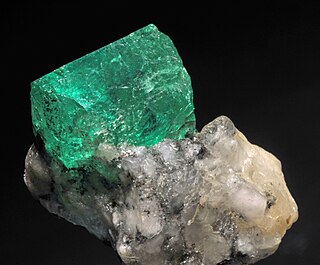
Emerald is a gemstone and a variety of the mineral beryl (Be3Al2(SiO3)6) colored green by trace amounts of chromium or sometimes vanadium. Beryl has a hardness of 7.5–8 on the Mohs scale. Most emeralds are highly included, so their toughness (resistance to breakage) is classified as generally poor. Emerald is a cyclosilicate.

A gemstone is a piece of mineral crystal which, in cut and polished form, is used to make jewelry or other adornments. However, certain rocks and occasionally organic materials that are not minerals are also used for jewelry and are therefore often considered to be gemstones as well. Most gemstones are hard, but some soft minerals are used in jewelry because of their luster or other physical properties that have aesthetic value. Rarity and notoriety are other characteristics that lend value to gemstones.

A ruby is a pinkish red to blood-red colored gemstone, a variety of the mineral corundum. Ruby is one of the most popular traditional jewelry gems and is very durable. Other varieties of gem-quality corundum are called sapphires. Ruby is one of the traditional cardinal gems, alongside amethyst, sapphire, emerald, and diamond. The word ruby comes from ruber, Latin for red. The color of a ruby is due to the element chromium.
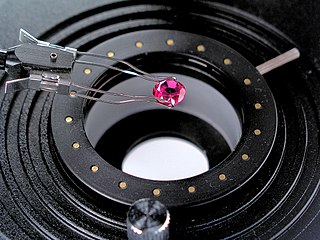
Gemology or gemmology is the science dealing with natural and artificial gemstone materials. It is a geoscience and a branch of mineralogy. Some jewelers are academically trained gemologists and are qualified to identify and evaluate gems.
Hearts and Arrows (H&A) diamonds are precision-cut variations of the traditional 57 faceted round brilliant cut. They are cut to "ideal" proportions with good optical symmetry, polish and a specific faceting pattern. When all these factors are present, the result is a repeatable, near perfect pattern of eight symmetrical arrows in the face-up position of the stone and eight symmetrical hearts when viewed in the table-down position.
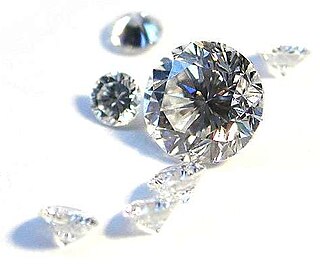
A diamond cut is a style or design guide used when shaping a diamond for polishing such as the brilliant cut. Cut does not refer to shape, but the symmetry, proportioning and polish of a diamond. The cut of a diamond greatly affects a diamond's brilliance; this means if it is cut poorly, it will be less luminous.

Diamond clarity is the quality of diamonds that relates to the existence and visual appearance of internal characteristics of a diamond called inclusions, and surface defects, called blemishes. Clarity is one of the four Cs of diamond grading, the others being carat, color, and cut.

A chemically pure and structurally perfect diamond is perfectly transparent with no hue, or color. However, in reality almost no gem-sized natural diamonds are absolutely perfect. The color of a diamond may be affected by chemical impurities and/or structural defects in the crystal lattice. Depending on the hue and intensity of a diamond's coloration, a diamond's color can either detract from or enhance its value. For example, most white diamonds are discounted in price when more yellow hue is detectable, while intense pink diamonds or blue diamonds can be dramatically more valuable. Of all colored diamonds, red diamonds are the rarest. The Aurora Pyramid of Hope displays a spectacular array of naturally colored diamonds, including red diamonds.

Demantoid is the green gemstone variety of the mineral andradite, a member of the garnet group of Minerals. Andradite is a calcium- and iron-rich garnet. The chemical formula is Ca3Fe2(SiO4)3 with chromium substitution as the cause of the demantoid green color. Ferric iron is the cause of the yellow in the stone.
Diamond enhancements are specific treatments, performed on natural diamonds, which are designed to improve the visual gemological characteristics of the diamond in one or more ways. These include clarity treatments such as laser drilling to remove black carbon inclusions, fracture filling to make small internal cracks less visible, color irradiation and annealing treatments to make yellow and brown diamonds a vibrant fancy color such as vivid yellow, blue, or pink.

The Gemological Institute of America (GIA) is a nonprofit institute dedicated to research and education in the field of gemology and the jewelry arts and based in Carlsbad, California. Founded in 1931, GIA's mission is to protect buyers and sellers of gemstones by setting and maintaining the standards used to evaluate gemstone quality. The institute does so through research, gem identification and diamond grading services and a variety of educational programs. Through its library and subject experts, GIA acts as a resource of gem and jewelry information for the trade, the public and media outlets.

Diamonds were largely inaccessible to investors until the recent advent of regulated commodities, due to a lack of price discovery and transparency. The characteristics of individual diamonds, especially the carat weight, color and clarity, have significant impact on values, but transactions were always private. With the standardized commodity as an underlying asset, several market traded financial instruments have been announced.
The Asian Institute of Gemological Sciences (AIGS) is a private gemological school and gemological laboratory based in Bangkok, Thailand.

Diamond is one of the best-known and most sought-after gemstones. They have been used as decorative items since ancient times.
International Gemological Institute (IGI) is a diamond, colored stone and jewelry certification organization. IGI is headquartered in Antwerp and has offices in New York City, Hong Kong, Mumbai, Bangkok, Tokyo, Dubai, Tel Aviv, Toronto, Los Angeles, Kolkata, New Delhi, Surat, Chennai, Thrissur, Ahmedabad, Shanghai, and Cavalese. Established in 1975, IGI is the largest independent gemological laboratory worldwide. It also runs Schools of Gemology in several locations around the globe.
Richard T. Liddicoat, Jr. was an American gemologist. Liddicoat was an educator in gemology, who also made contributions in the area of diamond quality grading and gem identification. Liddicoat was the Chairman of the Board of Governors at Gemological Institute of America (GIA).
Universal Gemological Laboratories (GCI) is a gemological laboratory and a college for educational services founded in 1998. The laboratory's main headquarters is in the Israel Diamond Exchange in Ramat Gan. The GCI has regional labs and educational centers equipped with local and Israeli staff in Russia and, since June 2006, in India—a disposition of four branches in Mumbai, Delhi, Hyderabad and Kolkata. GCI is the only western laboratory that is officially permitted by the Russian government to operate in Russia.

The "Star of the East" is a 94.78-carat, pear-shaped, D-color stone of VS2 clarity grade. Its exact origin is unknown, but it likely originated from India. The origin of its name and year of discovery are also unknown. The diamond was part of the collection of the jewellery-loving Sultan of the Ottoman Empire, Abdul Hamid II. It was later acquired by Pierre Cartier, who sold it to Evalyn Walsh McLean. After McLean's death, Harry Winston purchased the diamond together with McLean's entire collection. The diamond's current whereabouts are unknown.
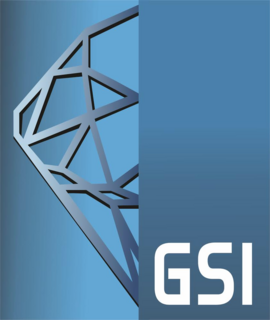
Gemological Science International, or GSI, is an independent gemological organization that is one of the largest gemological entities in the world, with offices in four continents.
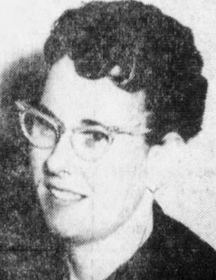
Sallie Morton, born Sallie Miller, was an American jeweler and gemologist. In 1977, she became the first female president of the American Gem Society.











